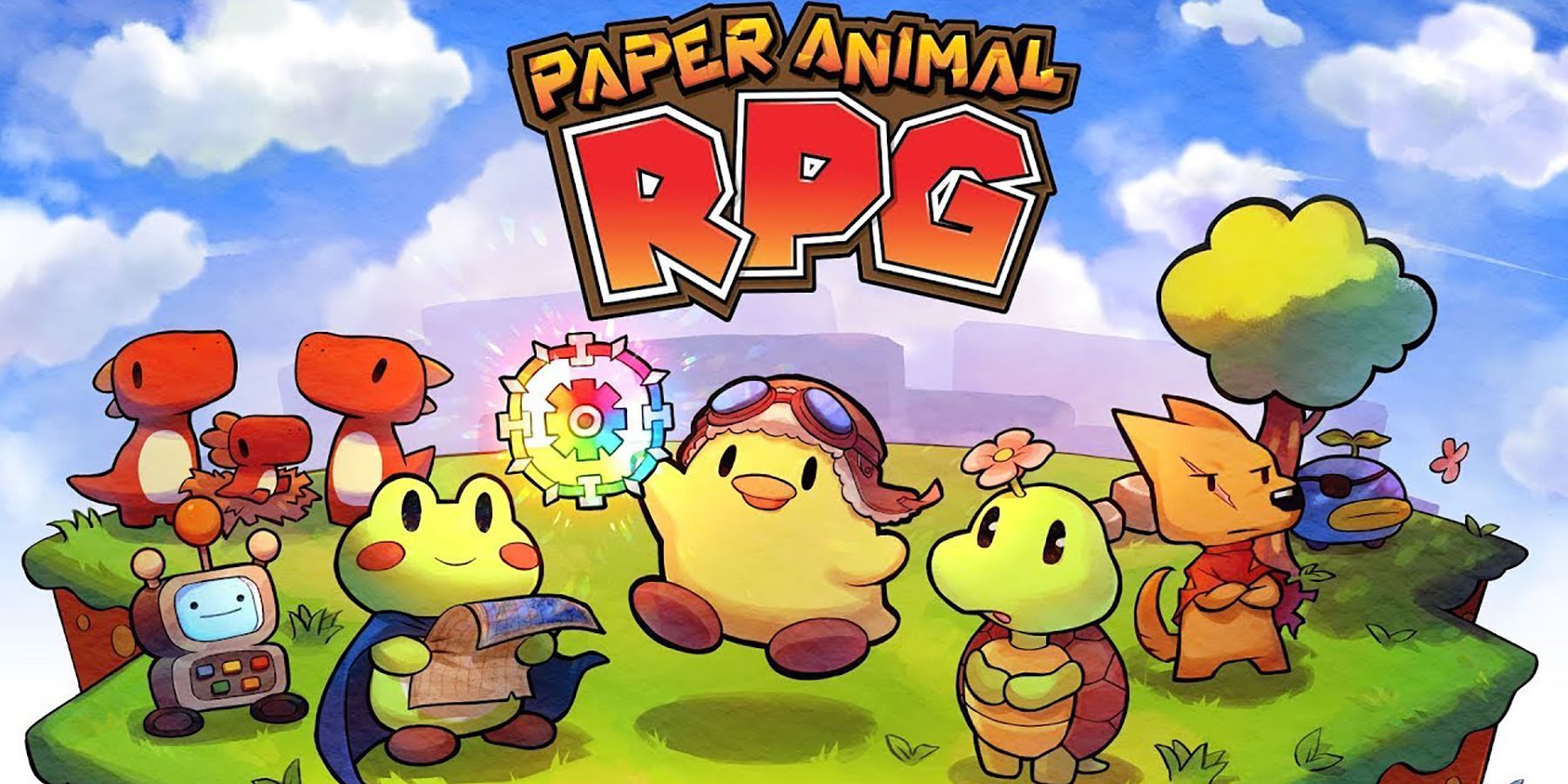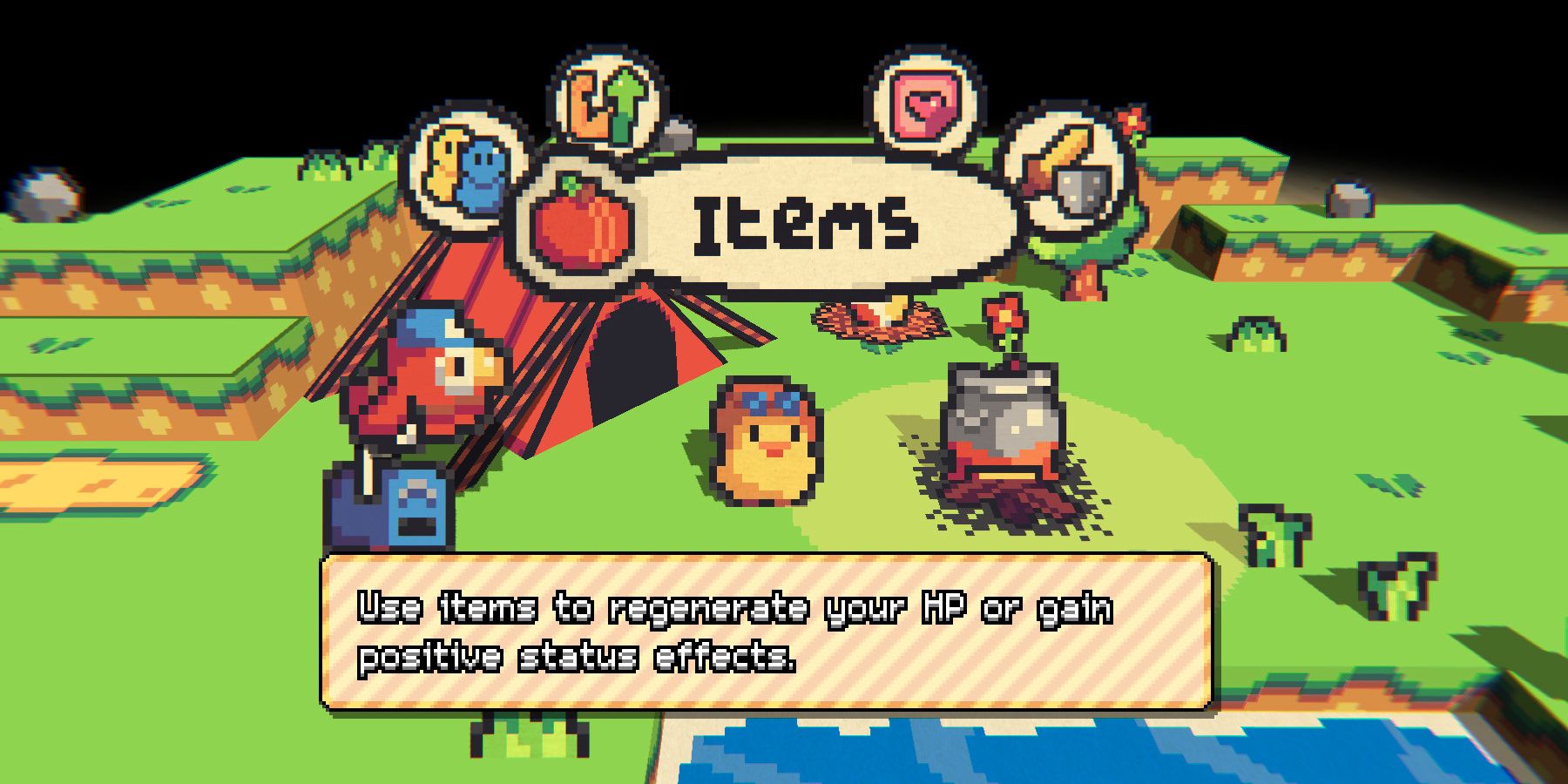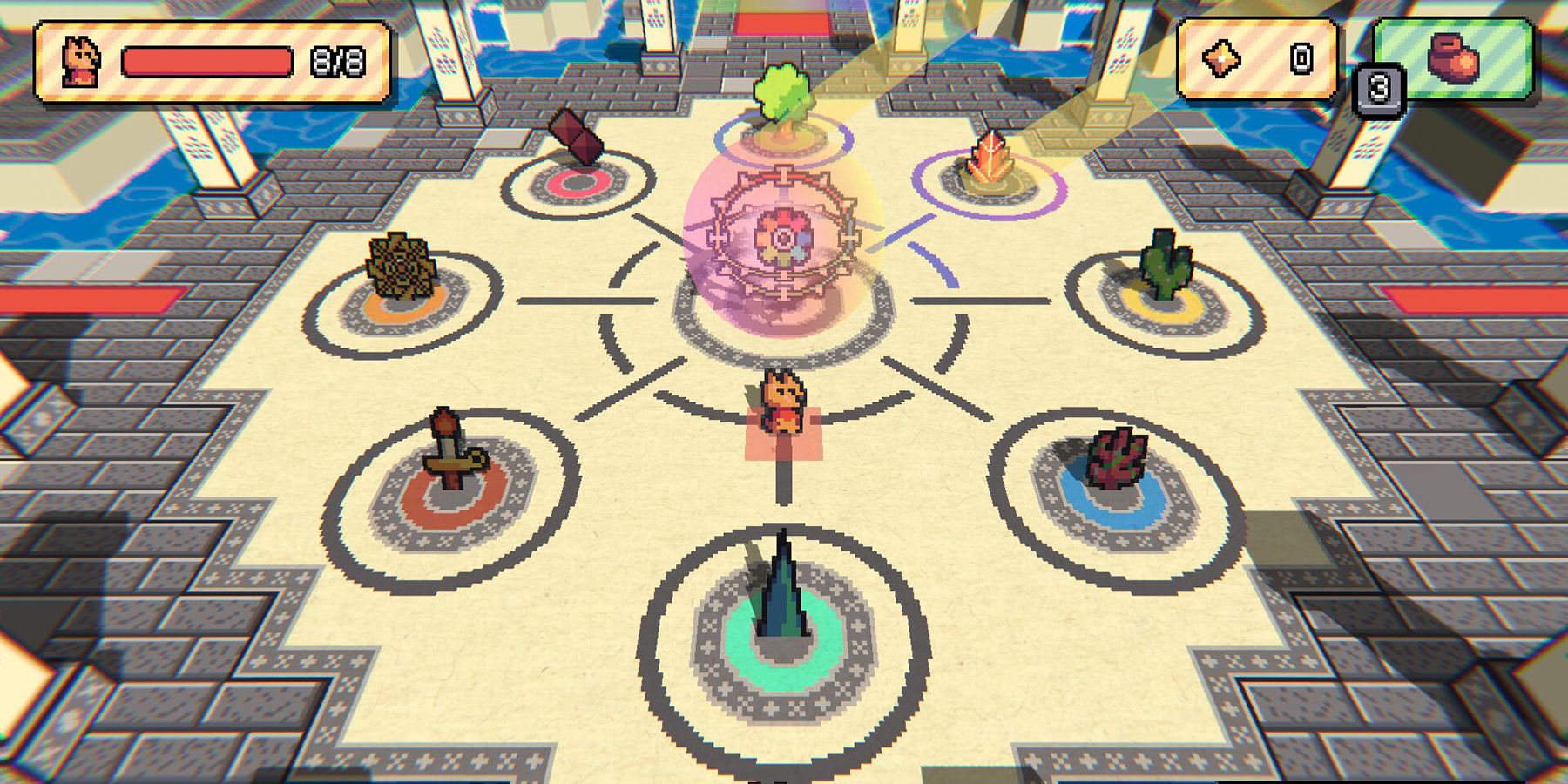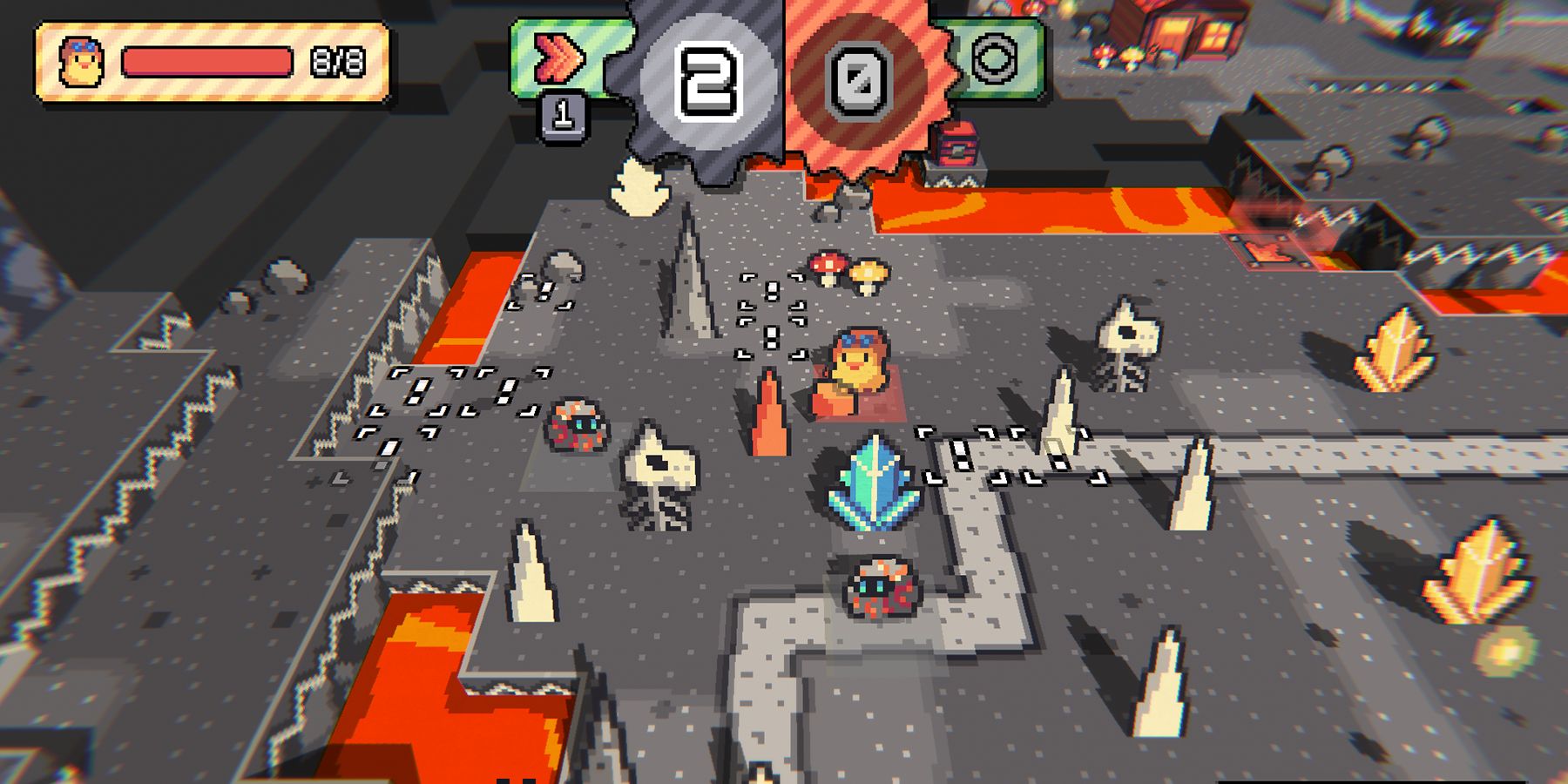Paper Animal RPG is the maiden voyage of developer Azurexis, currently the sole member of Cuddling Raccoon Studios. The genre bending title, which blends cozy comfort gaming with roguelike challenges, successfully concluded its Kickstarter campaign early yesterday, nearly doubling its initial goal in funding. Fans of Nintendo's various Mario RPG series like Paper Mario and Mario & Luigi may want to check out Paper Animal RPG for its similar vibe and numerous homages to those titles.
Game Rant recently spoke to Azurexis about Paper Animal RPG's development, influences, and mechanics. The following transcript has been edited for brevity and clarity.
Q: Please introduce yourself, and describe Paper Animal RPG in a couple sentences.
Azurexis: Hi there, my name is Nick, I’m 25 years old, and I am currently living in Germany. I’m also the developer of Paper Animal RPG! I tried my hand at making games since I was eleven, found the RPG Maker 2003 engine and tried to make Yoshi fan games with it. I actually studied at a university to become an elementary school teacher, but about a year ago I decided to give my dream of becoming a full time game developer a chance.
Paper Animal RPG is a cute and cozy roguelike RPG, where you explore a colorful world, that tries to imitate a papery-boardgame-like style, where you have to fight mildly scary enemies in a real-time tile-based battle system. In between dungeon floors are campsites spread out, where you can manage your team and inventory.
Q: PARPG recently hit Kickstarter. How long has the game been in development, and what encouraged you to crowdfund using that platform?
A: I have been tinkering with the concept of a real-time tile-based battle system for quite some time now with other characters and settings, but the game with my current vision of it and in its current form has been in development for about 12 months.
To be honest about my Kickstarter choice: I decided to use it simply because I saw many of my other game developers friends using Kickstarter to successfully to secure the financial aspects of their game and to get their foot into the door of the game development journey. But I also really wanted to use crowdfunding as the type of financing, since I always believed that the Paper Animal RPG had a very strong and supporting community behind it, and I thought it would feel awesome if we all can “accomplish the dream together”.
Q: In PARPG's Steam listing, you cite Paper Mario, Mario & Luigi, and Pokemon Mystery Dungeon as influences. What lessons and inspirations did PARPG take from those games specifically?
A: Quite many actually, ranging from bigger concepts to tiny details! The most obvious one is the flat characters and objects, where I tried combining pixel art with the Paper Mario aesthetic. There is also a small audience at the bottom that cheers you on when you do well, just like in The Thousand-Year Door. Also, when you open the character menu on camp floors a sub-menu will pop up that consists of several smaller bubbles with an icon and text, similar to the battle menu in the first two Paper Mario titles.
The exploring part is mainly inspired by Pokemon Mystery Dungeon, where you also explore a dungeon which is different each time. Mario and Luigi Superstar Saga uses a somewhat specific technique of Anti-Aliasing in their sprites to make them look less sharp and blocky, which I also imitated in the sprites of Paper Animal RPG.
Q: Can you give us an example 'loop' of what gameplay is like in an average map or dungeon?
A: I think it makes sense to divide the whole gameplay loop into two basic, separate components: the Dungeon and Camp Floors. You’ll spend most of your time on the Dungeon Floors, where you explore the procedurally generated map, find hidden treasures, battle against enemies and do small side quests. The Camp Floors are there for you to catch a break and actually manage, consume, use and spend the stuff you’ve found in the Dungeon. You can also cook meals there or hatch a dino egg—if you’ve found one, that is.
So basically, it’s always a loop of a real-time/action and a inventory management/relaxed phase. You could also say its sequence of exploring and gathering and then actually using and managing items/skills/stickers/etc.
Q: Tell us a bit about PARPG's skill system. Are skills character-exclusive, or can players mix and match?
A: There are three different roles: Brawler, Caster and Supporter. Each character and skill have exactly one of those three roles and for a character to use a certain skill, both roles have to match. Pyroblast for example is a Brawler skill, so Peep and Cookie—who are also both Brawlers—can use it while Kwak, being a Caster, can’t.
I also tried giving each role a specific feel and purpose. Brawlers for example are great all-rounder choices, with many Health Points and great Power stats, and shine in close combat. Casters on the other hand are the typical glass canon characters, and they specialize on a high Critical Hit Chance as well as ranged skills, like the Bubblegun or the Windblade. Supporters usually have high Health Points, Defense and Evasion Chance. Currently, they can cast various spheres that grant buffs upon collecting. If you aim badly, you can also hit enemies with the spheres and buff them instead, so you better be careful, haha.
Q: How many playable party members will you acquire throughout the game?
A: You will always start a run with one character and on your journey you will be able to recruit more and more characters, up to a party size of four. The actual character pool out of which those get chosen is a lot bigger though! Currently, there are seven characters available, and one of them has five different forms.
When you start the game for the first time you’ll be able to chose between the three main characters, namely Peep, Shelp and Kwak. You can unlock two more characters for the Character Select screen. And depending on who and what you meet during your run there are even two more secret characters! This is just for the current Kickstarter demo though, the full game will expand this pool of course.
Q: The Steam listing also mentions numerous consumable items, and that players can mix them together after stealing a cooking pot from enemies. What sorts of things can players create?
A: Mostly different types of food! The players are encouraged to try and mix all sort of things together and experiment with the results. There are a few basic rules to the cooking system, but after a few tries you should get to know them quickly. For example if you cook a Golden Potion with something else than another Golden Potion you will get “Something,” which is basically the "mistake item" in Paper Mario. It still heals some Health Points, so it might be useful in some situations, but you are usually looking to avoid cooking it.
There are also beans in the game, which raise a random stat permanently. If you cook a bean with an item that raises the Power stat temporarily for example, you’ll get a Red Bean, which raises your Power stat permanently. Oh, and Fish Bones should only be cooked with Onions! (Might sound crazy, but will result in a tasty Soup!)
Q: What advice do you have for players looking to collect a lot of stickers quickly?
A: Ahh, I think there might be a small misconception here! Stickers in the game act like badges in the Paper Mario series or like gear with passives in other games, which means you can equip stickers and they grant you a passive effect, like higher movement speed or stronger Attack Power. Usually, you’ll find stickers on your way through the dungeon naturally, just like you would find other skills. The stickers also get lost when you start another run.
The game does have another type of collectible though: Cards! Depending on how high your score is at the end of a run you will get virtual booster packs, and when you open them there is a random card inside. Each card has a picture of a character, an item or another concept and some text about the story and lore behind them. Basically like digital trading cards. If you want to collect them quickly I just have one simple tip: Play the game!
Q: PARPG features a 'casual mode' that is gentler than its 'classic mode.' Do you think more roguelike games would benefit from those kinds of accessibility features?
A: Yes! I was debating with myself for a long time if I should include a Casual Mode, since I feel a big thrill for playing a roguelike is discovering game content that can only be discovered if you played well. Technically speaking, with a Casual Mode you could 'cheat' yourself out of that hidden game content, since you don’t have to play as well as you normally would. But I decided to lock some stuff in Casual Mode, while still offering a wide range of the game’s usual content. This way the game is a bit more accessible for folks who like to have an easier experience, while also having that super secret mystery content for players who perform really well
Q: Do you think the recent surge in comfy and cozy titles is a reaction to other video gaming trends (grimdark souls-likes, highly competitive titles), current events, or something else altogether?
A: That is actually a very philosophical question, haha. I think with the global situation in general; COVID, climate change, wars, inflation, and so on… people do seek a mental place where they can dive in another world and feel safe there.
Q: Roguelikes and cozy games have become increasingly popular in the indie-design space, but those two paradigms rarely overlap. What inspired your team to develop a wholesome-roguelike?
A: Basically, I like both genres very much, with the wholesome genre—if you can call it a genre—being cozy and welcoming and the roguelike genre, being full of mysteries and challenges. I also haven’t seen many cross-overs between these two concepts, so I thought why not combining two of my favorite game concepts into one?
Q: The Steam listing explains players are searching for a missing, benevolent king. What else can you tell us about the game's story?
A: Ahh, I want to keep most of the story a secret, so that players can experience it by themselves without being spoiled! But I can tell you one thing: The king might not be as good as we all think!
Q: Can you share a little bit about the development of the game's general aesthetic and graphical style?
A: I often jokingly say I’m neither good at 2D art nor at 3D modeling and with this art style I can hide both these flaws kinda well, haha. But to be honest, I really love the flat pixel art in a 3D atmosphere look. Back when I started this project there weren't too many games around with that look—the only one I can remember is Octopath Traveler—so it still felt fresh and unique and I wanted to go with that. You sometimes have to bend and break a few rules and systems for some effects to work, for example to avoid Z-fighting or simply to make things look “good”.
Q: Who developed the game's sound and music? What goals were you hoping to achieve with the soundtrack?
A: The Paper Animal RPG soundtrack is composed by Mothense (@MothenseMusic on Twitter) and most of the sound effects were created by Jeff Brice (@pumodi on Twitter). I initially wanted to go for a cozy and quirky vibe and I also described my vision of that to Moth and I think they did a really great job realizing that idea in the soundtrack. At some point I decided to give them a bit more artistic space and “let them do their thing” with their vision of the game’s musical design. So currently I only tell them “desert theme,” and they come up with something great, haha.
The same goes with Jeff too, actually! I simply tell them which sounds we need and they come up with something awesome. I also think the end product is often better when you don’t enforce your concrete, personal idea of some of the game’s aspect upon your team members and instead let them also be creative.
Q: How large is the Cuddling Raccoons Studio team?
A: The Cuddling Raccoons Studio team is just me, but I’m working with many amazing and talented individuals on Paper Animal RPG, like Moth and Jeff who I mentioned before. Furthermore, there were so many wonderful people who helped with other things, like play-testing, reporting bugs, some pixel art, the title screen and so on. There is also our publisher Top Hat Studios and they were helping out a lot with planning the Kickstarter campaign and they will also take care of the marketing and porting when we’ll approach full release.
Q: What were some of the greatest challenges you faced during development? Do you have any advice for indie devs who are just starting out or considering taking their project to Kickstarter?
A: When working with Unity I encountered some things that just didn’t work for some reason and I tried debugging and finding why it doesn’t work for multiple hours. Getting support for some specific areas when working with Unity can prove to be a difficult task, since it takes a long time until you get an answer in the Unity forums—if you get one—and their help channel in their Discord is usually very overloaded. So, then you can choose to get it working by yourself somehow or just give up on that feature and move on. I sometimes wish I had someone like a Unity mentor who I could just go to and ask for some problems, haha.
My advice for indie devs who are planning to go to Kickstarter is to really take their time and plan everything ahead if possible. Also get your Kickstarter pre-launch page up as quickly as possible, post it everywhere and get people to click on that “Notify Me on Launch" button. This really helps a lot!
Q: Is there anything else you would like readers to know?
A: I would like to quickly talk about the Elder Altar system, which was heavily inspired by the gifts from Pokemon Mystery Dungeon and the message system from Elden Ring. There is a secret area in Paper Animal RPG that is online-exclusive, which is called the Elder Tree area. There is this giant, glowing tree, with an altar in front of it and many, cute looking creatures around it. When you go up to the altar you can spend your experience points to donate a present that will show up in another player’s world, with your name and a small message attached to it. In return, the more presents you donate, the more presents from other players will show up during your runs with potential helpful stuff in them.
I love this system because you can help out each other with kindness and it also has this social interaction component, without it being explicitly multiplayer. Also, the more you donate, the more Nanas (the cute looking creatures) there will be!
Thank you very much for the interview, it was super fun. This sounds a bit cheesy, but I always say this at the end: Be kind to yourself and others!
[END]
Paper Animal RPG is expected to launch in September 2023 for PC, PS4, PS5, Switch, and Xbox Series X/S.




